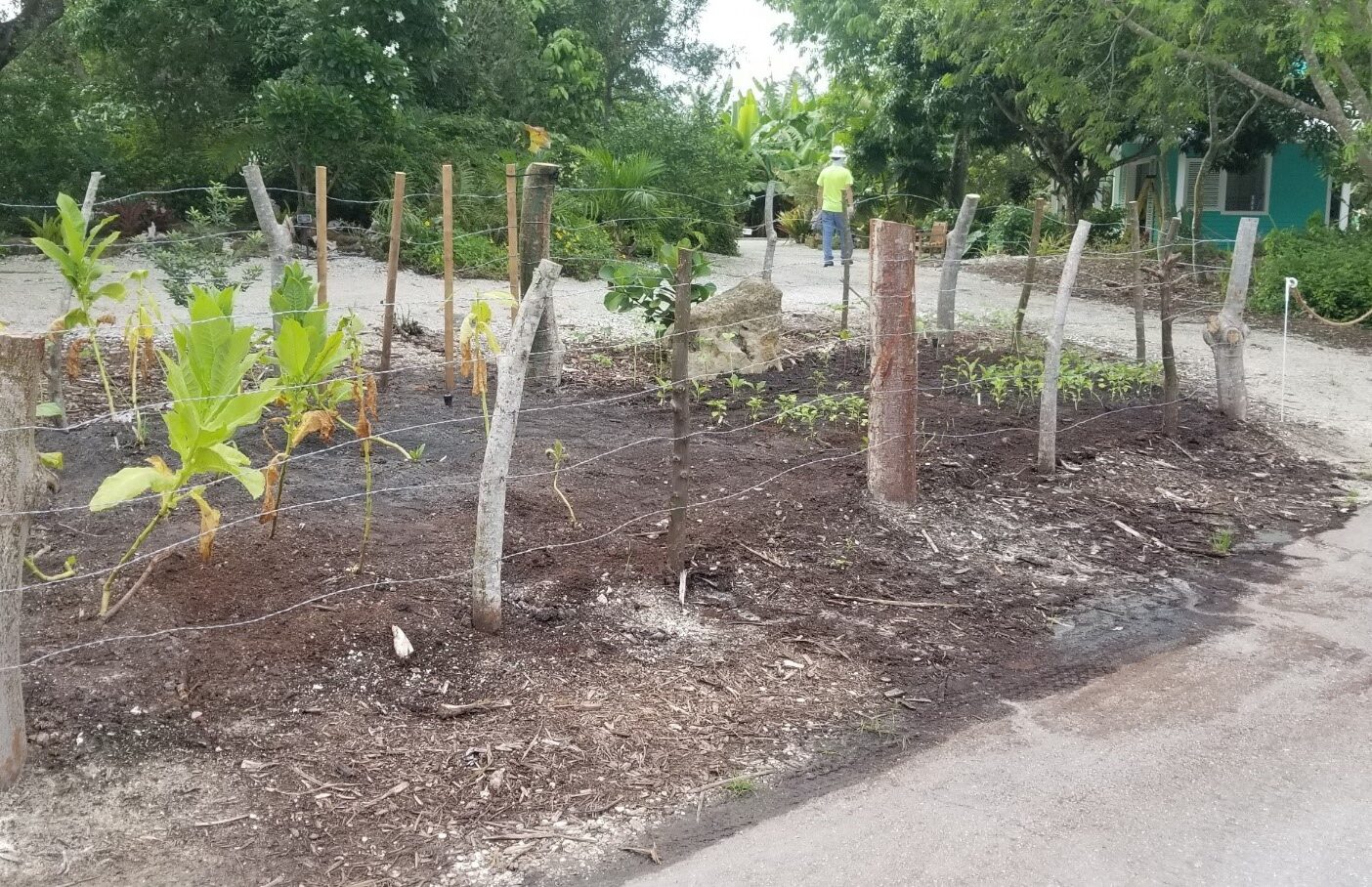
Luis Duron, the Horticulture Special Projects Assistant, eyeballs a thick segment of a gumbo limbo tree that Horticulture Maintenance Manager Stephen Jurek maneuvers into place.

“Perfecto!” he says, approvingly. Luis, Stephen, and Horticulture Manager Elizabeth Beans are along a lakeside trail at the edge of the Kapnick Caribbean Garden building the Garden’s latest display — an agricultural demonstration area bordered by a “living fence.” That structure is exactly what its name conveys, a fence made up of live plants, in this case, gumbo limbos.
Living fences are common throughout the Caribbean, including Luis’ native Honduras, which is why Elizabeth and Stephen have asked him to take charge this sultry morning. Luis cuts the gumbo limbo into roughly 6-foot sections (later pruned to 4 feet), and the trio places them as fence posts along a rectangular perimeter. Wire will be added another day.
The fences are “everywhere” in the Caribbean, Luis says. In Honduras, they are commonly used to pen cattle and to mark residential property boundaries. Throughout the Caribbean, dense walls of cacti are frequently used, which may be ideal for rural homeowners and ranchers but not for our kid-friendly Garden or for viewing an agricultural display. Gumbo limbos have interesting qualities that make them good fence material. The tropical tree sprouts roots from its cuttings, turning these woody segments into living trees. They also photosynthesize through their bark, allowing them to produce energy to aid in root production and longevity even without leaves. The Horticulture Team will prune them periodically to maintain their shape.
Horticulture Manager Elizabeth Beans and Horticulture Maintenance Manager Stephen Jurek prepare the ground for the gumbo limbo fence posts.Guests can see the display by taking the Lake Trail loop, accessible from the Caribbean Garden.
The Horticulture Department has long wanted to build a living fence in the Caribbean Garden. A smaller model once stood here, but with Luis now on staff to oversee the process, this one is larger and more authentic, Beans and Jurek say. The Garden has close ties to the Caribbean, where we collaborate with several other botanical gardens to conserve subtropical plants and share research.
“It’s a sense of place. It makes you feel like you’re in the Caribbean,” Beans says. “and to get people to see how you utilize everything on your land.”
Vice President of Horticulture Brian Galligan says he’s always been “intrigued” by how residents of Caribbean countries use natural materials.

“You don’t just go order a fence post,” he says. The trees used for this project were taken from elsewhere in the Garden because they were failing to thrive in their original locations.
Agriculture is an important theme for the Kapnick Caribbean Garden. This demonstration area will showcase several warm-weather crops over the summer, such as okra and eggplant. The Caribbean Garden overall contains numerous fruit trees, including banana, papaya, mango, guava, as well as sugar cane, spice trees, and cacao.
Click here for information on visiting the Garden, including our current safety precautions.
 About the Author
About the Author
Jennifer Reed is the Editorial Director of Naples Botanical Garden and a longtime Southwest Florida journalist.


